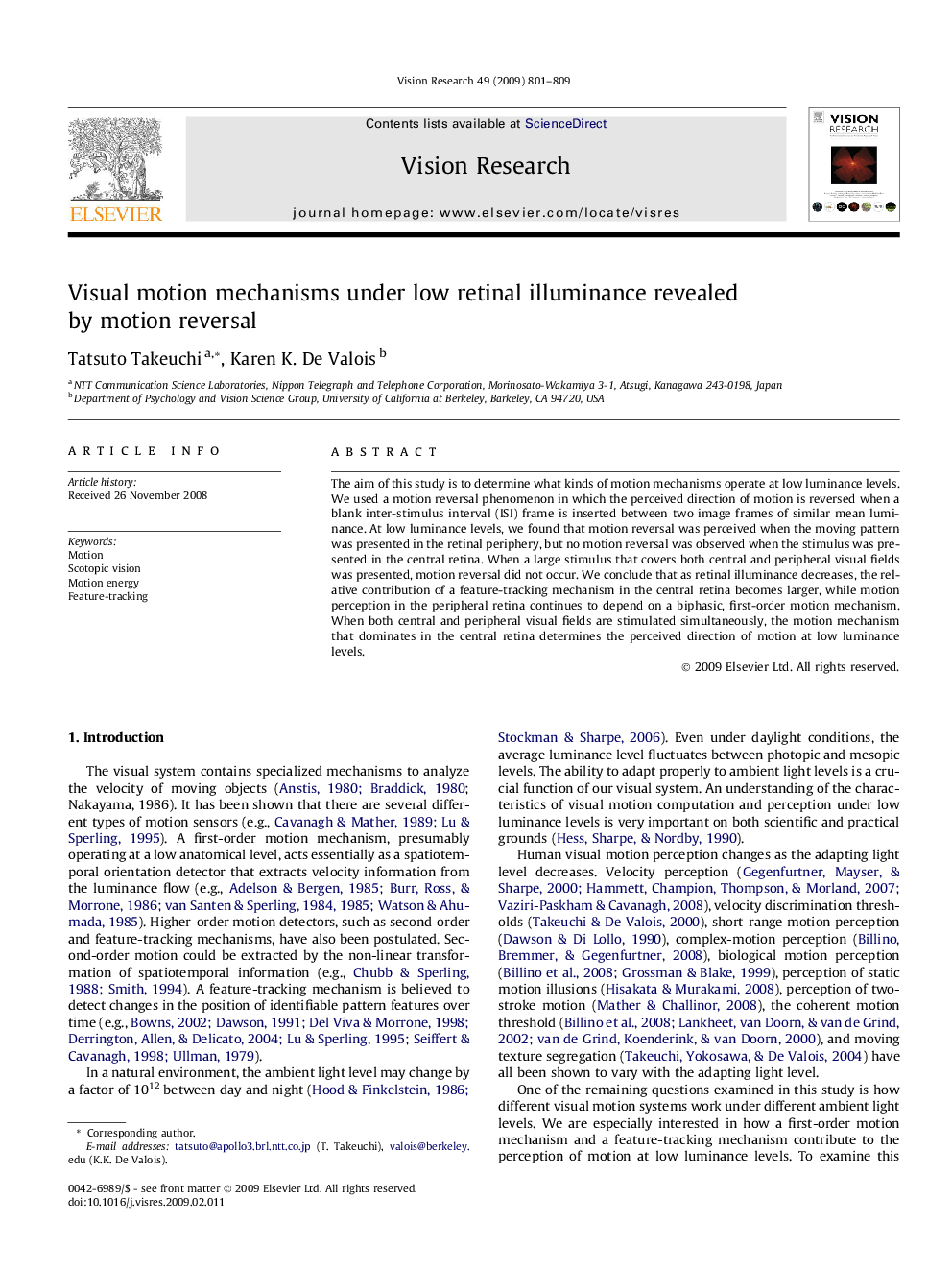| Article ID | Journal | Published Year | Pages | File Type |
|---|---|---|---|---|
| 4034791 | Vision Research | 2009 | 9 Pages |
The aim of this study is to determine what kinds of motion mechanisms operate at low luminance levels. We used a motion reversal phenomenon in which the perceived direction of motion is reversed when a blank inter-stimulus interval (ISI) frame is inserted between two image frames of similar mean luminance. At low luminance levels, we found that motion reversal was perceived when the moving pattern was presented in the retinal periphery, but no motion reversal was observed when the stimulus was presented in the central retina. When a large stimulus that covers both central and peripheral visual fields was presented, motion reversal did not occur. We conclude that as retinal illuminance decreases, the relative contribution of a feature-tracking mechanism in the central retina becomes larger, while motion perception in the peripheral retina continues to depend on a biphasic, first-order motion mechanism. When both central and peripheral visual fields are stimulated simultaneously, the motion mechanism that dominates in the central retina determines the perceived direction of motion at low luminance levels.
